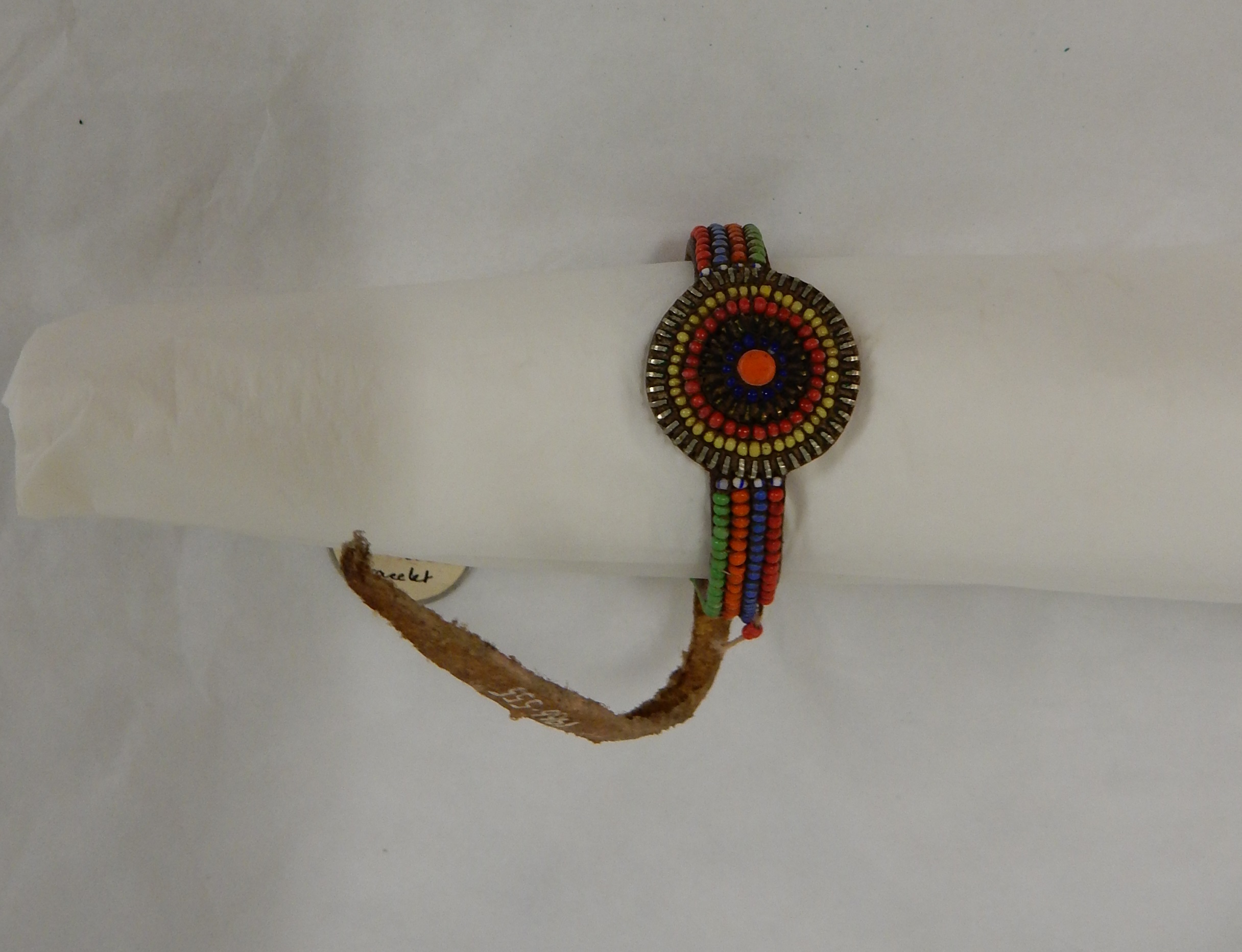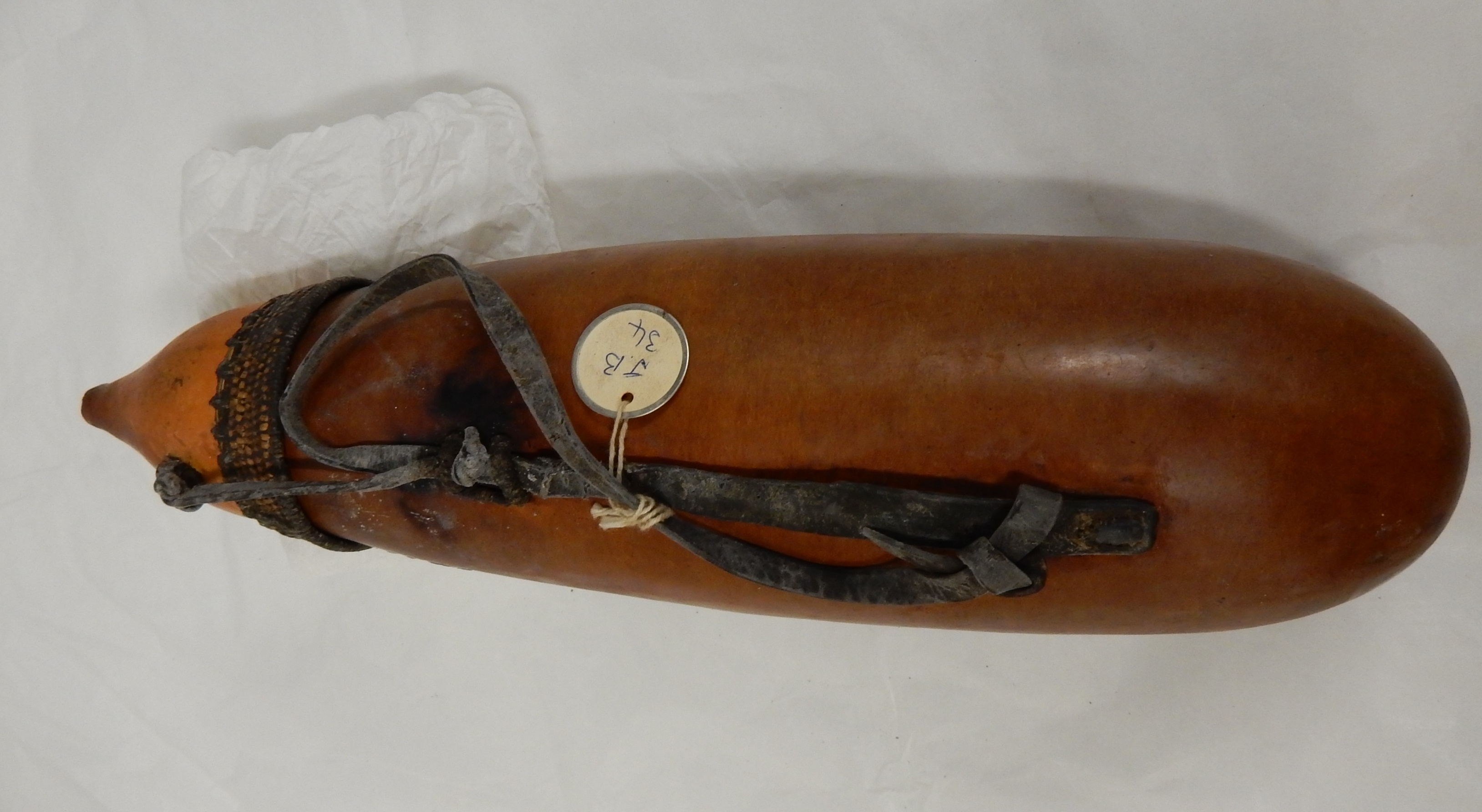I spent six weeks examining, photographing and cataloguing a fantastic selection of African beadwork and other personal objects from across the continent, and I left with more questions than answers.
I was working as a curatorial volunteer alongside Dr Sarah Worden, senior curator of the Africa Collection in the Department of World Cultures (DWC). I am an anthropologist by training and currently teach social anthropology at the University of Edinburgh. My desire to gain curatorial experience was stimulated by a small collection of ethnographic objects acquired over time in the University of Edinburgh’s Department of Anthropology which I am currently re-curating with two colleagues. My time in DWC has been extremely fruitful and engaging and given me a good sense of the ins and outs of curatorial work. In particular, I have been privileged to work with the collections themselves.
Our focus was a collection of beadwork from East Africa, in particular from the Pokot, Masai, Samburu and Njemps people of Kenya. I conducted fieldwork amongst contemporary Pokot in 2010 and was amazed to find that I recognised much of the collection from my own fieldwork. A large part of the collection was acquired in the 1960s from archaeologist and anthropologist Dr Jean Sassoon Brown. What was her relationship to National Museums Scotland? How did these items come to be in Scotland?
Lifting objects out of layers of tissue, the dusty, musky smell that accompanies many of them from old leather, seeds and mud, was an educational experience. I learnt how to hold, measure and photograph them and what particular features (mends, personalised ornamentation) to look out for. This wristlet for example, is made from beads sewn onto leather in the form of a wrist watch (Figure 1). The record tells us it was worn by a Njemps woman, from the Lake Baringo area, Kenya.
Clearly then, women were in close contact with European settlers – were watches a marker of status? Were they understood as markers of time, or simply as a form of ornamentation? The ‘wrist watch’ indicates changes in fashion influenced by cross-cultural contact between rural and urban communities. At the same time, it may carry symbolic significance of which we are unaware.

Beads were one of the most successful trade items in history, traded from Persia and China to Africa by traders from as early as 200 BC. They tell stories not only of personal adornment, fashion trends and cosmological beliefs, but also of contact between African people’s and traders, settlers and vast trading empires. European beads are recorded as having become available on the East coast of Africa from the 15th century, when the Portuguese battled for control of this coastline.
Before European manufactured beads became available, natural materials were used, such as ostrich shell, reeds, bones and claws. In this necklace from the mid-20th century, natural and man-made materials have been combined to make a necklace of wire, plastic beads and tortoiseshell ornaments (Figure 2). This, we are told in the label attached by Dr Brown, is a necklace worn by a little girl of the Pokot (Suk) people. The collection has the potential to reveal multiple, parallel and overlapping relationships:
- that of the little Pokot girl, and perhaps her mother who might have made the necklace;
- that of the traders and the Pokot people;
- of Brown Sassoon and the Pokot;
- of Brown Sassoon and the National Museums;
- and between the curators and these objects.

As an anthropologist I have been trained to think about and pay attention to these social relationships. As a curator, Sarah pays attention to these as well as the material qualities of the objects. What is the object made from, what can the patterns and stitching, colours and mends tell us about how particular objects were valued, used and understood within these societies? What status do they ascribe to the wearer? A mend, for example, suggests value. Many of these items would have been worn by particular individuals to mark different life stages, adolescence, and marriage, number of admirers or children. Furthermore, many of these objects are still in use. This child’s milk gourd, for example, is the same type of gourd in use by pastoralist Pokot to carry and trade milk with agriculturalist Pokot in markets in the northern Rift Valley today (Figure 3).

Objects then are both material and social. My experience working with this collection has thrown up many questions, but these are questions that Sarah’s ongoing research will unpack over the next few years. My time as a curatorial volunteer has been inspiring and educational. Working with the ‘stuff’ of anthropology reminded me of the human story behind all objects and museum collections.
Further Reading
- Crabtree, C. and P. Stallebrass, Beadwork. A World Guide, Thames & Hudson
Discover how brass and copper once featured as mediums of exchange, status and power in Africa through highlights of the museum’s 19th and early 20th century collections from west and central Africa. The Art of African Metalwork runs from 22 February to 25 August 2019 at the National Museum of Scotland: https://www.nms.ac.uk/africanmetalwork
